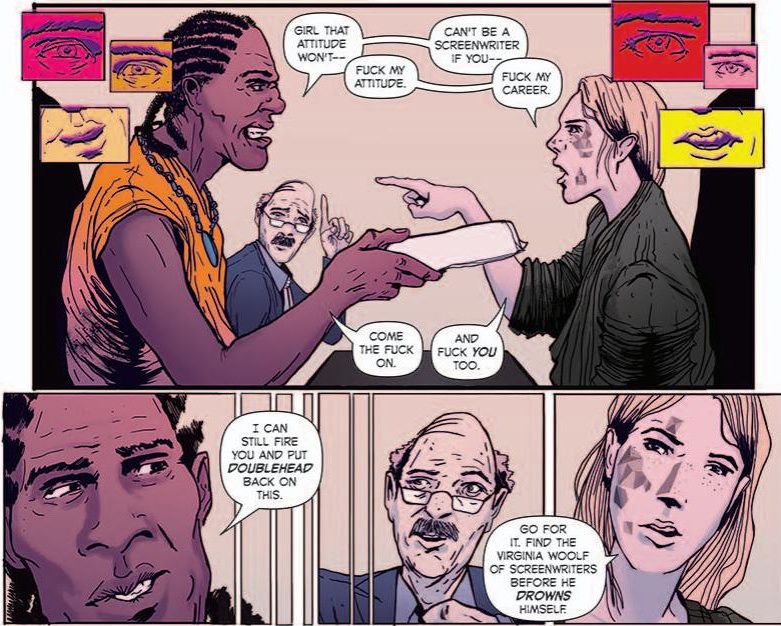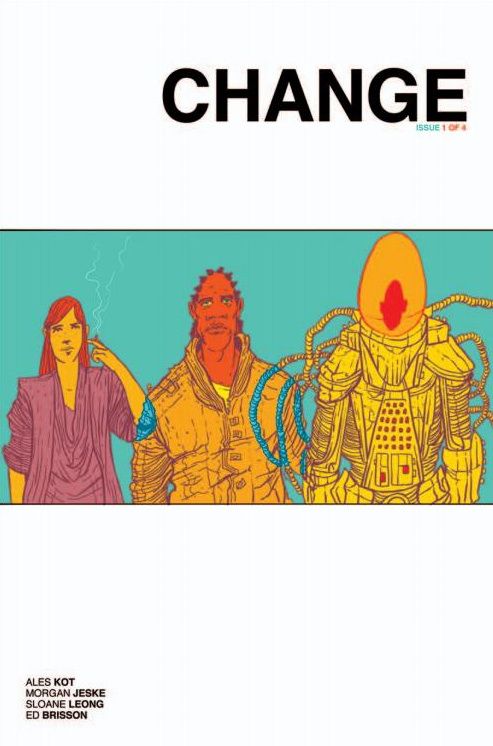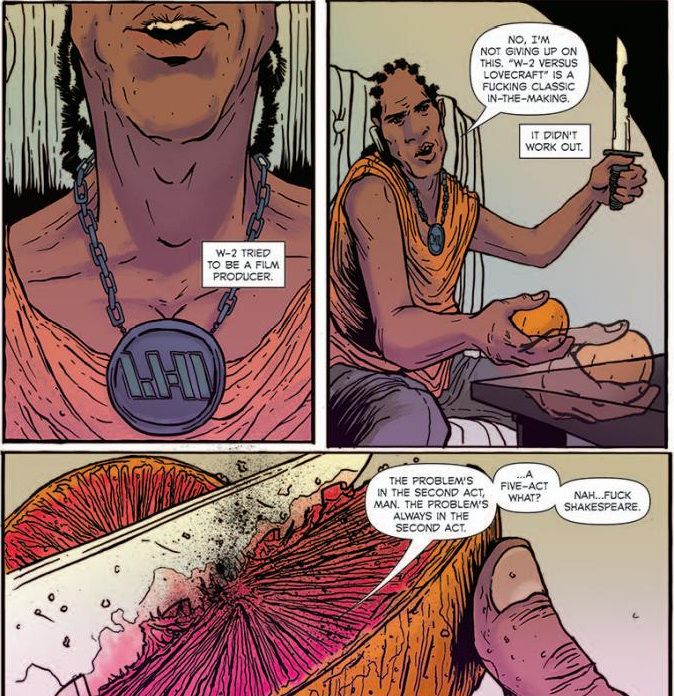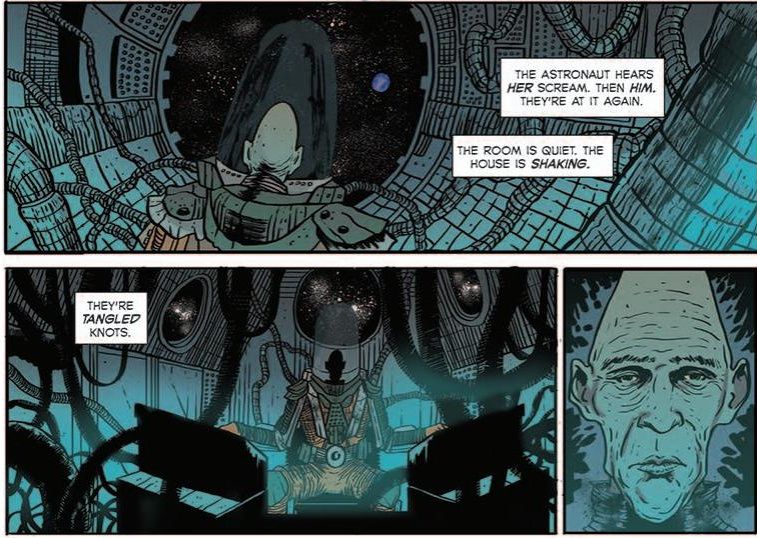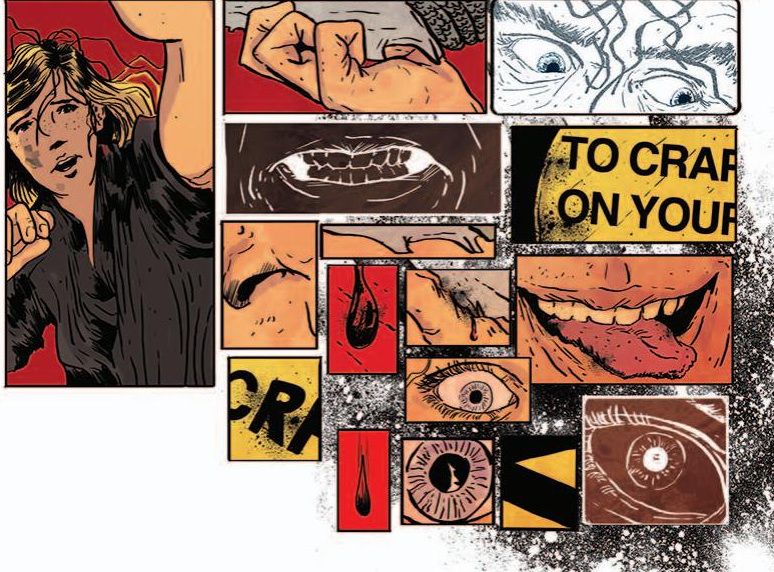Yes, it's time for another review of a comic from the future! In this case, Change #1, which hits stores tomorrow. Perhaps this will make you want to seek it out!
A while back, I picked up Wild Children on a lark ... and hated it. It had been getting some nice reviews around yonder Internets, and so I thought I'd give it a look.
I thought it was self-indulgent and silly, which actually kind of depressed me, because I love it when writers try something different, and Ales Kot, who wrote it, certainly tried something different ... but I didn't think he pulled it off very well. Kot got in touch with me and told me he appreciated the review, even though it wasn't my thing, and mentioned he had a new comic coming out called Change. I had already seen it in Previews and was planning on checking it out (if I allowed one bad comic to dissuade me from checking out a writer's work, I'd never read anything, would I?), and Kot was nice enough to send me a .pdf of the first issue so I could read it before spending my money on it. Change is showing up in stores tomorrow, 12 December, and it's drawn by Morgan Jeske, colored by Sloane Leong, and lettered by Ed Brisson.
The major problem I had with Wild Children is that Kot seemed a bit too pleased with being clever, and while I like cleverness in fiction (because I'm not terribly clever at all), I like it in the service of a story, and Wild Children didn't really have a good one. When I read the solicit for Change, it seemed like Kot did have a story, so I figured it would probably be better. And, from the first issue, it is.
I'm not willing to go nuts over Change yet, but after a quarter of the story (it's four issues long in case you're not good at math), it seems like Kot can take his oddball sensibility and marry it to a good plot, and that automatically makes this a fascinating comic.
Kot doesn't get to the grand plot, but he does hint at it. Instead he takes his time introducing his characters, especially the three main ones there on the cover. Sonia Bjornquist is a screenwriter who gets fired off a job at the beginning of the issue, and Wallace Maya, known as W-2, is the guy who fires her. Wallace is making a movie in which he stars, as himself, living in some kind of Lovecraftian world. Sonia's screenplay is apparently a bit too edgy for him, but she won't rewrite it, so he fires her. Meanwhile, the first manned mission to Europa - Jupiter's moon - is coming back to Earth, and there's a strange astronaut inside the capsule - he looks somewhat human, but there's something off about him, and I'm sure we'll find out his deal soon enough. Sonia crashes at her agent's office, but then he inexplicably tries to stab her (she survives; he doesn't) at about the same time that Wallace and his wife are attacked by robed weirdos in their house. They make it to their panic room, but they have no idea what's going on. And then the astronaut sees something as he's looking down at Earth that really disturbs him. That can't be good. Oh, and there are two dudes spying on the office of Sonia's agent. They don't seem put out by Warner (that's the agent) trying to kill Sonia - in fact, they seem to expect it. What the heck is going on?
Well, that's the point, isn't it? As with any beginning, Kot is trying to intrigue us, and so far, he's doing a good job of it. Plot-wise, there's a lot going on even though there are plenty of questions. Kot is an interesting writer because he can turn a clever phrase and create interesting metaphors without sliding too far into pretension, and when he does, there's a method to his madness. My heart sank when I began reading this, because it begins with "Her face was beautiful like drone video footage from Afghanistan."
That's not a bad sentence, actually, but it reeks of pretension, like something an angry poet would say at a coffeehouse in Portland between drags on his Gauloises. If the entire comic was like that, I would have hated it. But it turns out that it's part of Sonia's screenplay, and Kot deftly brings her down a few notches in later pages, as she's a bit of a cliché even if she herself wouldn't see it - the writer who believes everything she writes is genius and fools who would change it are obviously idiots. Kot still reaches for ostentatious words, but I think what makes this better than Wild Children is that these characters feel more real than the ones in the earlier comic and they interact on a more human level, so a lot of the comic is grounded, allowing Kot to get away with more pretentious language a bit because it's not so pervasive throughout. It also allows him to show a panel with a random person typing on a typewriter and not explain who it is (Kot himself?), because he's done a pretty good job creating the other characters, so I was willing to let him put himself in the comic and just move on (if it's indeed him). Kot has some wild ideas, and when he forces them into a plot, they work better. After one issue, Change is far more interesting than Wild Children because it's not a rant. Rants can be fun, but they get old quickly.
The art team is quite good, too. I'm unfamiliar with them, but both Jeske and Leong do a fine job with the visual aspect of the book. Jeske's initial drawing, of a scrambled woman (the one whose face was beautiful like drone footage) with a haunted look in her eyes, is amazing, and Leong's astonishing blue and purple coloring suck us right into the book. When we move to the "real" world, Jeske's lines become more solid, but they don't lose anything in terms of quality. Jeske is a raw artist, sure, but there's a bit of Paul Pope in his artwork, and you can see the potential he possesses.
His figures are interesting and unique, and while it appears that, like many young artists, fluidity isn't his strong suit, Kot doesn't make him draw too much action, so that's not a concern. Some of his "camera angles" are excellent, heightening the oddness of Kot's script, and his layouts when the book takes its violent turn is very nice, as he uses the old-but-wise standard of smaller panels with off-center glimpses of various aspects of the greater whole to intensify the tension. Leong moves from "normal" coloring to more intense reds, yellows, and oranges, which is again a cliché, but that's because it works. Plus, it provides a nice contrast with the spacebound sections of the book, which are deep blue and black, as they must be. It's nice that we can get a comic that's drawn nicely but where you can tell that the artist can get better, because that makes the book itself enjoyable and also gives you something to look forward to!
Kot writes on his web site that he has quite a lot lined up for 2013. While Wild Children may have gotten some kudos, I hope Change is much more indicative of the kind of writer he is, because I'll be much more excited about his upcoming work if that were so. Obviously, it might not be for you, but it's definitely worth a look. Do you really need to buy that issue of Deathstroke that comes out tomorrow? I doubt it. Use the money to pick up Change instead!

